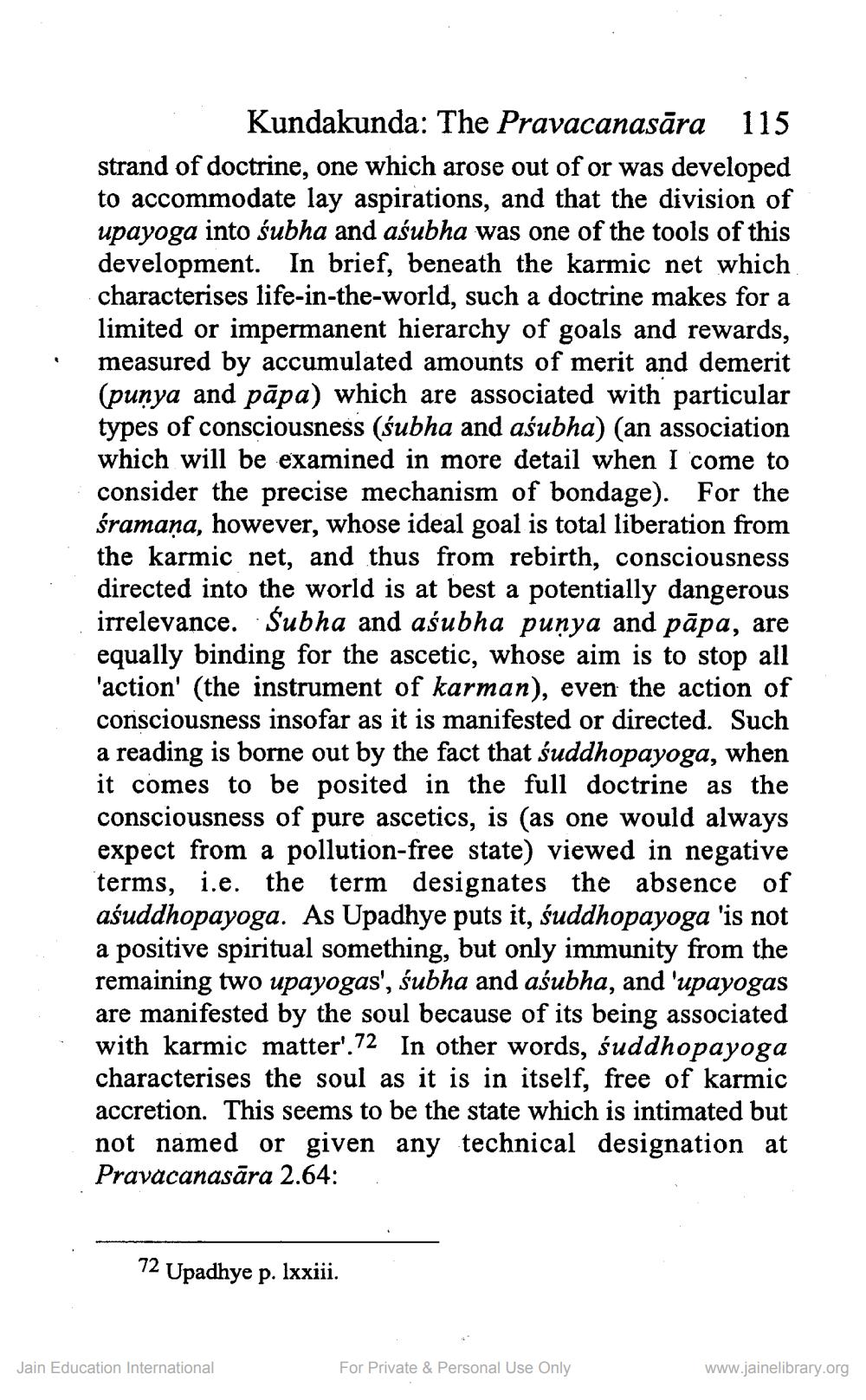________________
Kundakunda: The Pravacanasāra 115 strand of doctrine, one which arose out of or was developed to accommodate lay aspirations, and that the division of upayoga into śubha and aśubha was one of the tools of this development. In brief, beneath the karmic net which characterises life-in-the-world, such a doctrine makes for a limited or impermanent hierarchy of goals and rewards, measured by accumulated amounts of merit and demerit (punya and pāpa) which are associated with particular types of consciousness (śubha and aśubha) (an association which will be examined in more detail when I come to consider the precise mechanism of bondage). For the śramaņa, however, whose ideal goal is total liberation from the karmic net, and thus from rebirth, consciousness directed into the world is at best a potentially dangerous irrelevance. Subha and aśubha punya and pāpa, are equally binding for the ascetic, whose aim is to stop all 'action' (the instrument of karman), even the action of consciousness insofar as it is manifested or directed. Such a reading is borne out by the fact that śuddhopayoga, when it comes to be posited in the full doctrine as the consciousness of pure ascetics, is (as one would always expect from a pollution-free state) viewed in negative terms, i.e. the term designates the absence of aśuddhopayoga. As Upadhye puts it, śuddhopayoga 'is not a positive spiritual something, but only immunity from the remaining two upayogas', śubha and aśubha, and 'upayogas are manifested by the soul because of its being associated with karmic matter'.72 In other words, śuddhopayoga characterises the soul as it is in itself, free of karmic accretion. This seems to be the state which is intimated but not named or given any technical designation at Pravacanasāra 2.64:
72 Upadhye p. Ixxiii.
Jain Education International
For Private & Personal Use Only
www.jainelibrary.org




